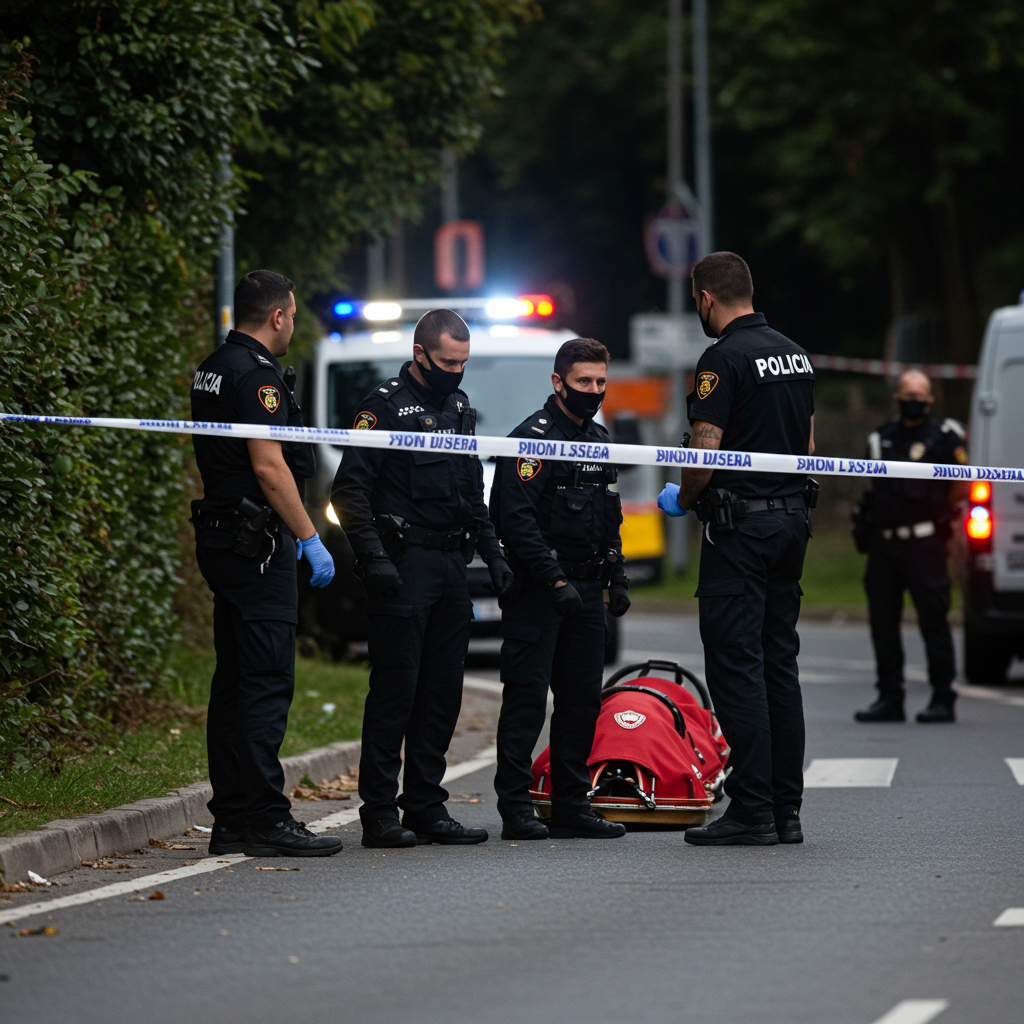Tragic news surrounding the fatal car accident involving Liverpool footballer diogo Jota and his brother continues as Spanish police release preliminary findings from their investigation. Authorities now state that evidence gathered so far strongly suggests the vehicle was likely traveling at excessive speed moments before the devastating crash that claimed the lives of both brothers. This development sheds further light on the possible factors contributing to the tragedy that has shocked the football world and beyond.
Initial Details of the Fatal Incident
The accident occurred in the early hours of a recent Thursday morning on the A52 motorway near Palacios de Sanabria in Spain’s northwestern Zamora province. The vehicle involved, a Lamborghini, was reportedly being driven by Diogo Jota, aged 28, with his brother, André Silva, 25, also in the car. According to initial police accounts, the incident happened while the car was apparently in the process of overtaking another vehicle.
Investigators indicate that the luxury sports car then veered off the motorway. Following leaving the road, the vehicle subsequently burst into flames. The intensity of the fire was significant, leading to almost complete destruction of the car. Both brothers were tragically killed at the scene. André Silva was a footballer himself, playing for Penafiel in the Portuguese second division.
Police Findings: Driver and Speed
Spanish police, specifically the Guardia Civil traffic police in Zamora, have been conducting a thorough investigation into the circumstances of the Diogo Jota crash. Based on their analysis of the available evidence, they have issued statements regarding their preliminary conclusions.
Evidence Pointing to Driver and Speed
A key element of the police investigation has involved examining physical evidence from the crash site. Authorities focused significant attention on the marks left on the asphalt by the vehicle’s tyres. Their analysis of these specific marks has led investigators to a crucial early determination. “All the tests carried out so far indicate that the driver of the crashed vehicle was Diogo Jota,” police stated. This conclusion is based on forensic examination of the scene.
Furthermore, the same analysis of tyre marks, alongside other evidence, suggests that speed was likely a major factor. Traffic police from Zamora indicated that “everything is also pointing to a possible high excess of speed over the permitted speed on that stretch of the motorway.” The posted speed limit on that section of the A52 is 120 km/h (75 mph). Police believe the car was traveling significantly faster than this limit.
Forensic Analysis and Tyre Marks
Forensic teams are reportedly performing detailed analysis on the tyre marks found at the scene. Reports indicate that tyre marks were visible for approximately 100 metres (330ft) leading up to the point of impact. The analysis of these marks is crucial for understanding the vehicle’s behavior just before the crash.
Investigators are specifically examining whether these marks suggest a potential tyre burst occurred. More importantly, they are analyzing if a tyre failure happened in conjunction with excessive speed. The focus is on determining if a combination of these factors – a possible tyre burst and the vehicle’s velocity – ultimately led to the driver losing control.
Challenges of the Investigation
The subsequent fire at the crash site has presented significant challenges to the police investigation. The intensity of the blaze resulted in the near-total destruction of the Lamborghini. This has complicated the forensic analysis of the vehicle itself, potentially destroying physical evidence that could have provided more definitive answers about mechanical failure or other factors.
Despite these difficulties, the Guardia Civil has reportedly concluded its on-site investigation. An expert report synthesizing all findings is now being prepared. This report is subject to judicial review and will be submitted to the local court in Puebla de Sanabria. Police have indicated the report will be presented to the court before it is made public.
Context and Personal Background
The fatal journey was undertaken as Diogo Jota prepared to return to his professional duties. The brothers were heading to the Spanish port city of Santander. From there, Diogo planned to catch a ferry that would take him back to the United Kingdom. He was due to rejoin his Liverpool teammates for pre-season training ahead of the new football season.
The Fatal Journey
The route via Santander is a common travel path for individuals moving between the Iberian Peninsula and the UK. Jota was a key player for Liverpool, having made 182 appearances for the club and scoring 65 goals since joining. He was also a prominent member of the Portugal national team, earning 49 caps.
Personal Tragedy
The accident occurred just 11 days after a significant personal milestone in Diogo Jota’s life. He had recently married his long-term partner, Rute Cardoso, in Portugal. The couple shared three young children. This detail adds a layer of profound sadness to an already tragic event, highlighting the personal loss for his family.
Road Conditions Addressed
Following the crash, there were some suggestions that the condition of the road surface might have played a role. Specifically, reports mentioned potential unevenness in the asphalt near where the accident occurred. However, Spanish police have seemingly dismissed this as a primary cause.
Authorities told Spanish media that the stretch of the A52 motorway where the crash happened is not known as an accident “black spot”. They also indicated that the road conditions at that location should have been suitable for driving, even potentially at speeds beyond the posted limit, implying that excessive speed or a vehicle issue was more likely the critical factor than a flaw in the road itself.
The Aftermath and Tributes
News of the Diogo Jota crash sent shockwaves throughout the world of football and the wider public. The death of a prominent player at the height of his career, alongside his brother, prompted an outpouring of grief and condolences.
Funeral and Mourning
The funeral for Diogo Jota and André Silva took place at the weekend following the crash. The service was held in their hometown of Gondomar, near Porto in northern Portugal. The attendance reflected the deep impact of their loss, particularly within the football community. Notable figures present included Liverpool manager Arne Slot and several members of the Liverpool squad. Jota’s former teammates from Wolverhampton Wanderers, Ruben Neves and Joao Moutinho, were also among those paying their respects.
Widespread Condolences
Messages of condolence and tributes came from fellow players, football clubs, national leaders, and fans across the globe. This widespread reaction underscores the reach and impact of Diogo Jota’s career and the shared sorrow over the brothers’ untimely deaths.
In England, tributes quickly appeared at Anfield, Liverpool’s home stadium. Fans and public figures laid flowers, shirts, and heartfelt messages at the ground. Liverpool Football Club also opened physical and digital books of condolence, allowing supporters from around the world to share their thoughts and memories. The club aired a special program dedicated to the memory of Diogo and André.
While the investigation continues to formalize its findings for the court, the preliminary police statements regarding excessive speed provide the first concrete indication from authorities about a potential primary cause of this terrible fatal car accident. The focus now turns to the expert report and the judicial process to fully understand the sequence of events that led to the tragedy on the A52 motorway.
Frequently Asked Questions
What are the police’s main findings regarding the Diogo Jota crash?
Spanish police investigating the fatal car accident involving Diogo Jota and his brother have released preliminary findings. Based on evidence like tyre marks, they strongly believe Diogo Jota was driving the vehicle. Crucially, police statements indicate that “everything also points to a possible excessive speed” beyond the 120 km/h (75 mph) limit as a likely factor in the crash.
What evidence are investigators examining in the fatal Jota car accident?
Investigators are primarily analyzing the tyre marks left by the Lamborghini on the A52 motorway asphalt, visible for about 100 metres. These marks are being examined to determine the vehicle’s trajectory and speed. Forensics teams are also looking for signs of a possible tyre burst and whether such a failure, combined with excessive speed, caused the fatal loss of control. The investigation was complicated by the intense fire that destroyed the vehicle.
What was Diogo Jota doing in Spain before the fatal crash?
Before the fatal accident, Diogo Jota and his brother André Silva were traveling through Spain. Their destination was the port city of Santander in northern Spain. Diogo Jota was planning to take a ferry from Santander to the United Kingdom to return to Liverpool and rejoin his club for pre-season training. The accident occurred while they were en route to the port. Diogo had recently married his partner Rute Cardoso in Portugal just 11 days prior.
Conclusion
The preliminary findings from the Spanish police investigation into the tragic Diogo Jota crash provide important early answers regarding the likely circumstances. The indication of excessive speed as a significant factor, based on forensic analysis of the scene, marks a key point in understanding the complex events leading to the accident. As the formal expert report is finalized for the courts, the global football community and beyond continue to mourn the profound loss of Diogo and André. Further details from the official report are awaited to provide a complete picture of the tragedy on the A52 motorway.


